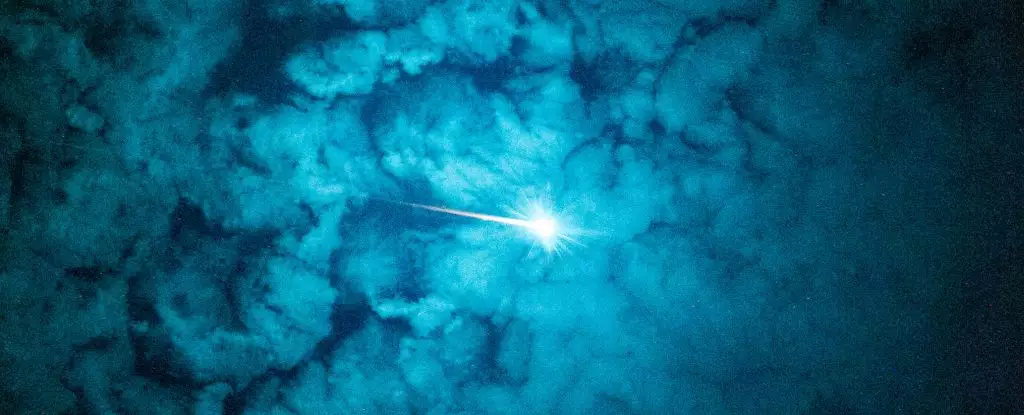In recent years, our Sun has exhibited an impressive display of activity, reaching a level that can only be described as aggressive. This intense energy release poses unique challenges to satellites orbiting our planet, particularly the extensive Starlink constellation deployed by SpaceX. A study spearheaded by astronomer Denny Oliveira at the NASA Goddard Space Flight Center reveals a compelling correlation between solar activity and the unfortunate demise of these satellites. The evidence presented showcases a remarkable phenomenon: as solar conditions escalate, so too does the rate of satellite re-entry, a finding that carries profound implications for the future of satellites in low-Earth orbit (LEO).
Through meticulous analysis of 523 Starlink satellites that fell out of orbit, Oliveira’s team has illuminated the undeniable consequences of heightened solar activity within the current solar cycle, which spans from 2020 to 2024. As they noted in their paper, “the intense solar activity of the current solar cycle has already had significant impacts on Starlink reentries.” This research not only advances our understanding of satellite behavior but also emphasizes the challenges posed by an environment that is increasingly affected by solar phenomena.
The Dynamics of Solar Cycles
Understanding the dynamics of the solar cycle is crucial to grasping how it impacts technologies we often take for granted. The solar cycle stretches approximately 11 years, characterized by phases of growing and waning activity, including the appearance of sunspots, solar flares, and coronal mass ejections. We currently find ourselves at the height of the 25th solar cycle, known as a solar maximum, where solar activity is generally spiked, resulting in a variety of terrestrial phenomena, including mesmerizing auroras.
However, the implications of solar maximum reach far beyond splendid night skies; these solar ejections significantly affect Earth’s upper atmosphere, causing it to heat up and swell. This expansion increases atmospheric drag on low-orbit satellites. The atmosphere, while invisible to the naked eye, plays a pivotal role in controlling the trajectories of spacecraft. Satellites are no longer able to maintain their altitudes without periodic adjustments, leading to an increased risk of unintended re-entries.
The Starlink Conundrum: A Numbers Game
SpaceX has successfully launched over 8,873 Starlink satellites, with 7,669 still actively transiting the skies. This scale provides researchers with an unprecedented dataset, enabling them to explore how solar activity influences orbital patterns. The research team employed sophisticated analytical techniques to discern the nuanced effects of geomagnetic conditions, which are intrinsically linked to solar activity.
Surprisingly, while one might assume that more powerful geomagnetic storms would account for most satellite re-entries, the research indicates otherwise. In fact, an astonishing 72% of reentries occurred during periods of weak geomagnetic disturbances. The cumulative effect of drag over time, rather than a singular catastrophic event, appeared to degrade the orbits of these satellites slowly, causing them to succumb to atmospheric forces gradually.
Trends and Predictions: A Chaotic 2024
Historically, the satellite re-entry rate showed a gradual increase from a mere two instances in 2020 to a staggering 316 in 2024. This alarming trend signifies the urgent need for better predictive models to guard against the consequences of solar activity. Oliveira’s findings emphasize that while we may have become accustomed to a decently functioning satellite network, we must remain vigilant as conditions intensify.
The satellite industry is at a critical juncture; operational adjustments will be essential to navigate the turbulent times brought on by our Sun’s capricious nature. The knowledge extracted from these studies could serve as a foundation for developing advanced orbital drag models tailored for extreme solar conditions, ensuring satellites maintain their intended orbits without catastrophic failures or collisions.
A Call for Innovation in Space Management
Oliveira and his colleagues advocate for innovative strategies to combat the impacts of solar-induced orbital decay. The potential to harness Starlink’s trove of empirical data—tracking real-time metrics such as orbital altitude, neutral mass density, drag coefficients, and more—could open new avenues for satellite management. Collaborative efforts to adapt to changing conditions will become indispensable as we face an increasingly active solar environment.
Modern civilization heavily relies on satellite technology, making it imperative that we develop robust systems to mitigate the sharp effects of solar fury. Without proactive measures to understand and react to the Sun’s unpredictable temperament, we risk chaos in our increasingly satellite-dependent world.

